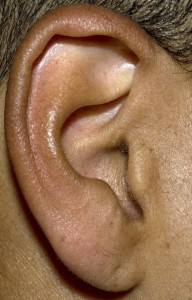A while back I wrote about earplugs, saxophone playing and how they can help save your hearing.
Foam earplugs work all right to block out noise, but they don’t do it uniformly across the frequency spectrum.
So if you’re listening, it distorts the music and if you’re playing…. it doesn’t really help your perception of what the other musicians are really playing.
If you are just trying to block out other noise, they work okay. I found that they tend to block higher frequencies more than lower frequencies.
A few months back I got some custom earplugs from a hearing specialist. They’re expensive, but I like them so far.
I went to an audiologist locally, they make a mold and then they make a pair of earplugs based on the shape of the inside of your ears.

You have the option to put inserts in the earplugs that reduce the volume by a variable number of decibels. Most commonly 15 dB or 25 dB it seems like.
Since I play saxophone with a salsa band and am around loud music pretty often, I just got solid custom earplugs. I had hear the inserts could fall out and sometimes I wear them while I’m actively moving around.
They’re not usually necessary in a jazz setting where the musicians play with some finesse.
But in other situations, they can help protect your hearing as a sax player.



Could you recommend or give me info for a student in a regular band setting? His eardrum burst due to an infectio and trying to protect/ preserve his hearing.
He should talk to a doctor about that.
Probably important to try and figure out what caused the infection in the first place and try to change that.
If it seems like the sound in band is a problem, the sound level will depend on where he is in the band, near the drums or brass could be a lot louder. Possible he should be using ear plugs. Talk to a doctor though.
what brand custom earplugs are you using?
Hello Adrienne,
Not exactly a brand. I went to an audiologist locally, they make a mold and then they make a pair of earplugs based on the shape of the inside of your ears.